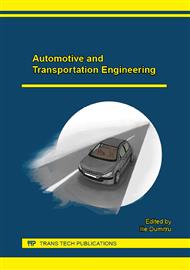p.397
p.403
p.411
p.418
p.429
p.437
p.443
p.455
p.461
Study about Improving the Quality Process Performance for a Steel Structures Components Assembly Using FMEA Method
Abstract:
Analysis of failure modes and effects (FMEA) is a method of analyzing the potential failure of a product or process, to develop an action plan aimed at their prevention and increased quality of products, processes and job production environments. As a method of critical analysis, FMEA has very clear objectives aimed at: determination of the weaknesses of a technical system; initiating causes of failure-seeking components; analysis environmental impacts, safety of operation, the product value; provision of corrective actions to remove the causes of the occurrence of defects; provision of a plan to improve product quality and maintenance; determining the needs of technology and modernization of production; increasing the level of communication between departments working people hierarchical levels. FMEA should be used before taking the product. There is no point subsequently, only because customer demands, to achieve FMEA. Therefore, FMEA must be within organizational conduct. Using timely analysis FMEA - Process avoid costly modifications of the technological achievement assembly "stator Housing" by identifying potential defects, avoidance and risk and potential consequences of faults. We studied the potential causes of defects and have proposed improvements. Among these are: implementing and tracking preventive maintenance program; providing specific compliance welding; acquisition of a specialized table seating and download the blank; purchasing a scarfing machine.
Info:
Periodical:
Pages:
429-436
Citation:
Online since:
January 2016
Authors:
Keywords:
Price:
Сopyright:
© 2016 Trans Tech Publications Ltd. All Rights Reserved
Share:
Citation:


